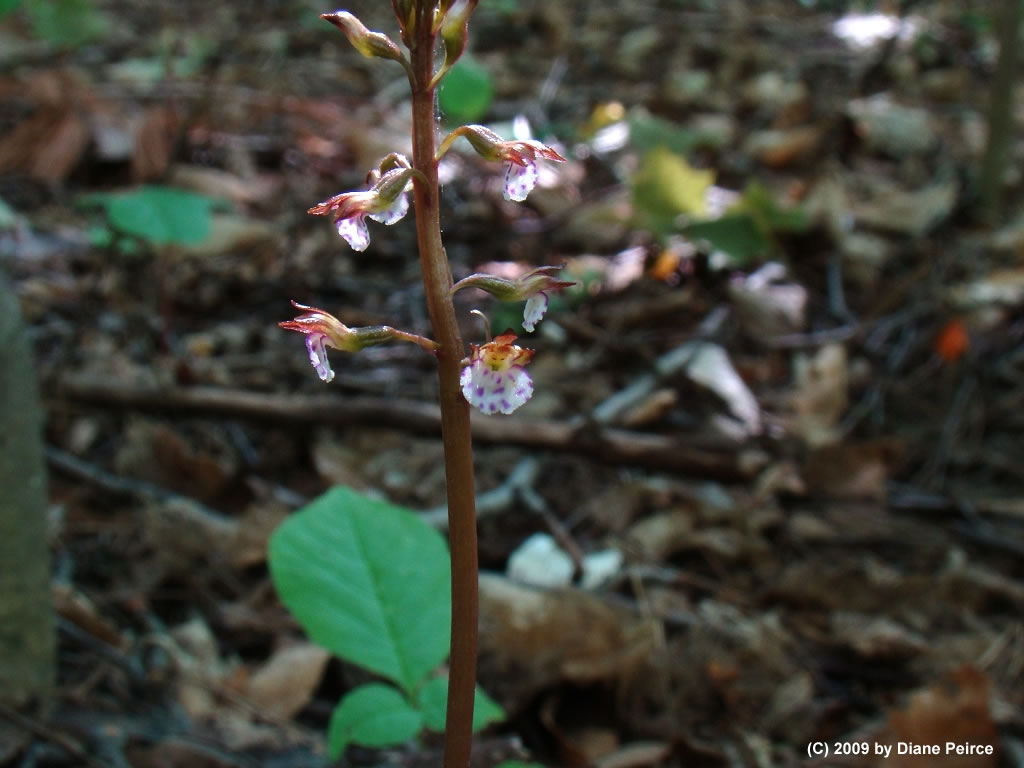Corallorhiza odontorhiza - Autumn Color Root
The autumn coral-root orchid is an herbaceous, perennial wildflower with a broad distribution across the eastern United States into southern Ontario and Quebec provinces, Canada, with several disjunct populations in Louisiana, Florida, South Dakota, Oklahoma, and New Mexico Autumn coral-root occurs occasionally as a single aboveground flowering scape or as several scapes in a clone.
Corallorhiza odontorhiza (Corallorhiza – corallion – coral and rhiza – root; coral-root and odontorhiza – odontos – tooth and rhiza – root; toothed-root) refers to the underground stems, rhizomes, appearing like an ocean coral and the tooth-like swollen base of the scape.
Corallorhiza odontorhiza attains a height of 10 to 30 centimeters. The yellow-green to purplish-brown scape emerges from a small, bulbous coralloid rhizome. The leaves are reduced to sheaths surrounding a simple scape (stalk of the inflorescence), yellow-green to purplish-brown at least midway up the scape. The inflorescence is a lax raceme of few to numerous flowers. Flowers range from open and slightly spreading to converging and nearly closed. The flowers are generally reddish-purple to reddish-brown often with a greenish caste, the perianth nearly closed in the cleistogamous flower and the perianth open in the chasmogamous flower; the lip is white, usually purple-spotted. There is a yellow color morph sometimes referred to as forma flavida. The fruit is a capsule.
Taxonomic note: Magrath and Freudenstein in the Flora of North America recognize two geographically overlapping varieties: Corallorhiza odontorhiza var. odontorhiza and C. odontorhiza var. pringlei.
Corallorhiza odontorhiza flowers from late summer to early autumn. The species occurs in a broad array of deciduous or mixed coniferous/deciduous forest habitats in humus rich soils.
Special note: The two forms of flowers can occur in close proximity to one another. Also, yellow-green to green color variants of Corallorhiza odontorhiza are occasionally misidentified as Corallorhiza trifida where their ranges overlap.







